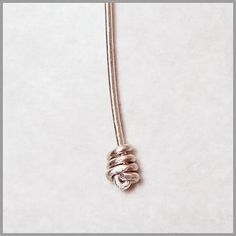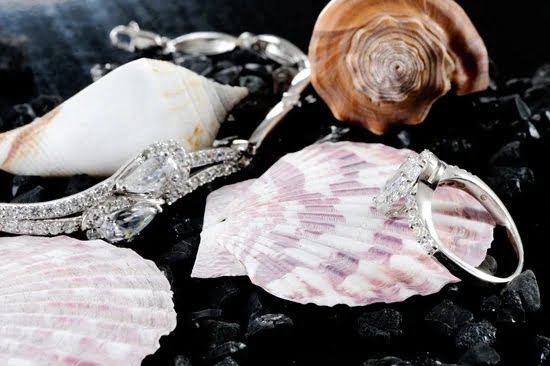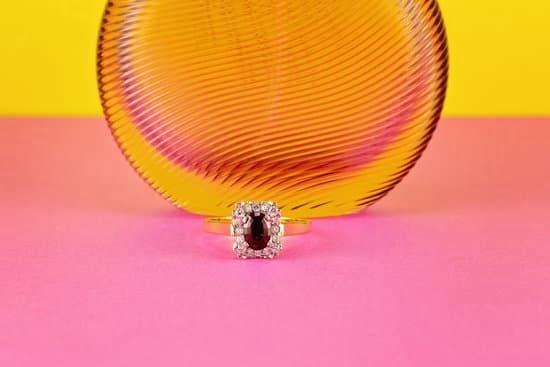Jewelry materials supplies are items that are used for creating exquisite and unique jewelry pieces. This could include anything from precious metals and stones to pearls, beads, buttons and cords.
Jewelry is an art form that requires the right tools and knowledge of different techniques in order to produce beautiful results that can be worn or given as the perfect gift. Having the right jewelry materials on hand is important not only for artists who specialize in creating one-of-a-kind pieces but also for those who make more commercial-looking items as well.
Essentials
When stocking up on supplies there are a few basic items you should always have on hand like pliers, wire cutters, files, saws and drills as well as various polishing compounds, fluxes, solder and glues. Depending on what kind of jewelry you plan to make, other specialized tools may be necessary such as wooden mallets for working with gemstones or tiny tweezers for assembling intricate designs from seed beads.
For construction purposes you’ll need strong stringing cord along with split rings and crimps which will prevent it from fraying at the ends.
Metals & Stones
In addition to your essential tools you’ll also want to stock up on metal findings like jump rings, earring hooks and clasps which can all be found in gold or silver finishes. When it comes to making your metal projects pop remember to consider all the different types of precious stones available like rubies, emeralds and sapphires that can really add a sparkle when combined with metal plating or engraving styles.
If your jewelry piece calls for something more delicate then think about using semi-precious stones like quartz crystals or moonstones which could add a subtle shimmer without overshadowing your design completely. Lastly don’t forget about faux gemstones-they often look just as impressive but won’t cost nearly as much.
Different Types of Materials
Jewelry is one of the most popular investments throughout the world, and in order to create beautiful pieces, manufacturers often turn to a variety of different materials. Silver, gold, and platinum are some of the most commonly used types of jewelry-making materials, but there are also many other options that can be incorporated into designs. Beyond these traditional metals exist stones such as sapphires, diamonds, opals, and more.
Silver is a white metal known for its affordability and versatile application in jewelry crafting. Silver is an ideal choice for stud earrings or necklaces where a bright sheen rather than deep saturation is desired. Gold is an incredibly popular metal that has been used to craft fine jewelry since ancient times.
Gold comes in several colors including yellow, white, rose and green; each hue being crafted from various alloys that give it its distinct shade. It offers excellent strength while remaining malleable enough for intricate designs when combined with other jewelry-making supplies like gems or enamels.
Platinum remains one of the most luxurious metals available today for crafting custom jewelry pieces due to its remarkable density and natural whiteness. It’s hypoallergenic properties make it even more attractive – those who often experience irritation due to lower grade metals may opt for Platinum instead if they want something with an especially high-end look and feel.
Of course many other materials may be used in combination with higher grades including sterling silver which holds up well against corrosion while still enabling greater detail than would be possible with pure golds or platinum alone.
Others include copper-based alloys which provide unique shades and colors when polished correctly as well as tungsten carbide which has incredible scratch resistance abilities that last longer than any other known material currently on the market for jewelry making useings. In conclusion, modern jewelers have access to a very wide range of different choices when selecting what type of material should best suit their needs for their masterwork creations.
Understanding the Jewelry Supplies Process
The process of making jewelry often begins with the basics – obtaining the necessary materials. This can involve a range of raw or semi-finished materials such as metals, gems and stones, alloying agents, and so on. Jewelers have a great deal of control over the cost of their products by selecting different types of raw materials to work with.
The next step in jewelry supplies is smelting, which involves taking basic metals such as gold and silver in their pure form and melting them into an alloy that is easier to work with. Alloying elements like copper or zinc can be added to adjust the strength, color and durability of the metal depending on how it will be used.
Once a metal alloy has been created, it typically needs refining before it can be used in jewelry manufacturing. Refining processes may change the texture and shape of a metal.
For instance, creating wire out of ore requires extensive hammering methods to break up large lumps while manufacturing chains would likely require more intricate processes like milling or die stamping. During this process jewelers are also responsible for purifying their alloys by removing trace elements that could make jewelry prone to tarnishing over time.
After refining has been completed, any desired finishes can finally be applied to jewels like polishing, plating or enamelling; some finishing techniques can alter both the appearance and feel of a gemstone significantly. Finally, any necessary stones or beads need to be secured securely into place; special tools such as screws will often be required here. Through these steps jewelers are able to craft unique pieces from extracted raw material with great creativity using specialist tools and techniques.
Essential Supplies for Jewelry Making
Jewelry making is an art and craft that has been enjoyed for centuries. To create beautiful, unique pieces of jewelry, it is important to have the right supplies. There are a variety of jewelry materials supplies and tools needed to make jewelry of all sorts.
Starting with the basics, a jeweler needs pliers, cutters, gauges, hammers and forming tools such as a rolling mill or file set. All of these tools are necessary to bend metal into shape and measure the exact sizes needed when piecing together intricate designs.
Beads, wires and chain are also common jewelry materials supplies used when creating pieces of jewelry. Beads in different shapes, sizes and colors can be combined with small jump rings to form necklaces or bracelets.
There is also shaping wire which is used to make items like earrings where gold or silver wire needs to be twisted and shaped according to the desired design. Chain is available in many styles and lengths allowing for creative pieces that require chaining components together with secure connections such as lobster claws or carabiners.
Alongside the basic materials supplies there are specialized tools used for intricate details on jewelry such as pendants or charms. Fabrication tools include sawblades for cutting metal or engraving marks into metal surfaces; machines such as T-bar rotary files for engraving text onto metal; chemical baths for coloring metals; compressions kits utilized for establishing stone settings; and pyramids sets equipped with multiple levels that hold gemstones in place while being shaped or modified.
It isn’t quick crafts but it’s rewarding. With the right combination of equipment, you have almost everything you need to become a professional jeweler.
Finding the Right Suppliers for Your Business
When it comes to creating successful jewelry pieces, having access to the right materials supplies is essential. It can be a very intimidating process to find reliable and reputable jewelry materials suppliers for your business. After all, getting substandard products from a bad supplier can cost you time and money.
Fortunately, there are some key steps that you can take in order to ensure you’re able to get the best jewelry materials supplies for your needs. To begin with, do some thorough research on suppliers available in your area. Look at what each one has to offer and make sure they’re aligned with your specific requirements.
Find out if they have any past clients that you could contact as references. Once you’ve narrowed down your list of options, request samples so that you can inspect their quality before buying in bulk.
The importance of price should not be overlooked when selecting the right supplier; however, just because something is cheap doesn’t necessarily mean it’s good quality either. Conducting effective product research is vital – look things like verified customer reviews which can provide insight into how previous clients have found their experience with a particular supplier (both positively or negatively).
If a seller offers merchandise at bargain prices but others report poor quality products and slow delivery times, then this probably isn’t an option for you as a reliable supplier.
On top of finding reliable suppliers who meet your product requirements even more importantly – look for a supplier who has values and ethics that match yours. A strong relationship between two businesses founded on common principles ensures successful deals now and in the future as well as providing mutual benefit along the way.
Develop relationships base on trust and open communication where everyone is honest about expectations from each other – this will ensure both parties will get everything they need from each other successfully moving forward.
Evaluating the Price of Jewelry Materials Supplies
When evaluating the price of jewelry materials supplies, there are various factors to consider. One of the most important factors is the quality of the product. High-quality materials promote better durability in jewelry, making them last longer and looking better over time. Cheaper materials may break more easily and wear down over time, resulting in a need for replacement or repair sooner than if you’d chosen higher quality supplies.
A second factor to consider when evaluating jewelry material supplies is the reputation of the vendor or merchant selling them. If possible, research reviews about their products, customer service, and return policy before buying from them; this can help ensure that you purchase high-quality items from reputable vendors.
Additionally, be sure to analyze whether any discounts or promotions are available; this can save money in the long run compared to buying at full price from someone who has lesser-known materials suppliers.
Finally, cost should be taken into account while shopping for supplies. Knowing how much your desired items cost on average helps narrow down what is within your budget when shopping for jewelry material suppliers.
The price1of a vendor’s products may range significantly, but comparing prices and searching through many different vendors helps people get higher-quality pieces at an affordable cost that works for them specifically. Many vendos provide item descriptions that explain features in detail; this ensures buyers receive what they expect before paying for an item upfront.
Overall, understanding the different considerations involved when evaluating price when purchasing jewelry material supplier helps ensure customers get long-lasting pieces they can truly love and enjoy wearing without sacrificing quality while staying within budget limits. Furthering one’s education on which types of jewelry materials suit each project best helps guide every decision and make sure people purchase outcomes they won’t regret later on.
Innovative Jewelry Materials Supplies
Innovative Jewelry Materials Supplies has become an essential resource for the creativity and craftsmanship of jewelry makers around the world. From newfangled techniques to classic materials, these supplies give artisans the freedom to explore their incredible talents. Whether you’re a beginner looking for tips and tricks or a seasoned pro who wants to experiment with fresh ideas, Jewelry Materials Supplies can help inspire your creative juices.
One of the most popular material choices among jewelry suppliers is metal. Precious metals, such as gold and silver, are frequently used in order to produce high-quality pieces that will stand the test of time.
Copper is also a great option because it’s both cost effective and malleable; allowing jewelers to shape it into any design they desire. Lastly, stainless steel is becoming increasingly popular due to its durability; which is perfect for parts of jewelry that might endure some wear and tear on a daily basis.
Jewelry makers often combine several materials into one piece as well; making way for endless possibilities when it comes to styling pieces with modern looks. Gems and crystals are often incorporated into designs due their shimmery hue and timeless beauty that never goes out of style; while resin pieces add texture that lets designers express themselves in unique ways with their creations inspired by originality.
Beads and charms provide embellishment that bring out even more gorgeousness in each piece, further expressing uniqueness without taking away from the authenticity of each design concept.
Whether you’re in need of powerful statements pieces or delicate everyday accessories – Jewelry Materials supplies allows everyone from hobbyists to professional jewelers access to an impressive selection of high-quality products sourced from all across the globe; bringing together artistic ingenuity with limitless potential.
Industry Best Practices for Working With Jewelry Materials Supplies
When working with jewelry materials supplies, it is important to follow the best practices in the industry to ensure a satisfying outcome. Jewelers must have certain skills and techniques to properly work with jewelry supplies, such as metals and stones. For everyone’s safety, there are some precautions that must be taken while working. The following tips will help you get started on working with your supplies safely and effectively.
Firstly, jewelers should use protective eyewear when cutting or grinding stones and metals to protect the eyes from dust particles and debris that can be generated in the process. Dust particles can cause permanent damage to vision if they were to enter the eyes. Additionally, always wear a mask when you are buffing metal or soldering pieces of jewelry together as this helps protect your lungs from toxic fumes produced by these processes.
In order to ensure accuracy during fabrication processes like cutting and forging, jewelers should always use metalworking tools specifically designed for these purposes instead of alternative objects that do not have an exact design or shape for metalworking operations. Additionally, depending on whether cold or hot metalworking is necessary for a particular piece of jewelry being fashioned, different tools such as file sets and saws should be used accordingly so as not to alter heat treatment property of certain alloys.
This helps make for a more successful outcome with less risks associated with using inappropriate tools for an application at hand.
Finally, discretion should also be exercised when picking stones used in fashioning jewelry pieces along with other materials like gold, silver etc., as each material used may require its own specific supply chain management practices depending on how rare they may be found combined with how prevalent counterfeited versions are on markets around the world today.
Jewelers should research potential suppliers thoroughly before committing to any purchase orders so that they make sure they only purchase authentic products; ultimately leading towards successful projects in terms of both cost and end product quality criteria defined by individual customers or clients.

Welcome to my jewelry blog! My name is Sarah and I am the owner of this blog.
I love making jewelry and sharing my creations with others.
So whether you’re someone who loves wearing jewelry yourself or simply enjoys learning about it, be sure to check out my blog for insightful posts on everything related to this exciting topic!





